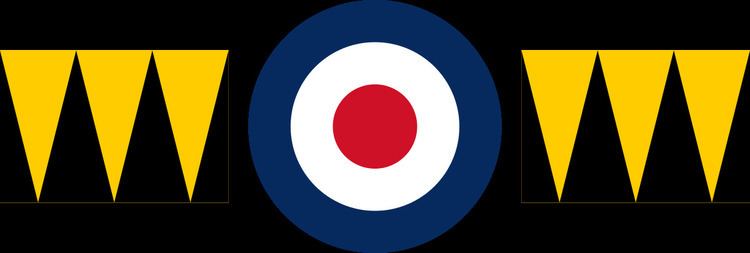Country United Kingdom | ||
 | ||
Active 14 June 1929 – 20 April 194510 May 1946 – 10 March 1957June 2001 – present Motto(s) Latin: Nil Time("Fear nothing") Battle honours France & Low Countries, 1940Battle of Britain, 1940Home Defence, 1940-45Fortress Europe, 1940-44Channel & North Sea, 1940-44France & Germany, 1944Normandy, 1944All these honours are emblazoned on the squadron standard | ||
No 501 Squadron was the fourteenth of the twenty-one flying units in the Royal Auxiliary Air Force, the volunteer reserve part of the British Royal Air Force. The squadron won seven battle honours, flying Hurricane, Spitfire and Tempest fighter aircraft during World War II, and was one of the most heavily engaged units in RAF Fighter Command. In particular, the Squadron saw extensive action during the Battle of France and Battle of Britain. At present the unit is not flying any more and has a Force Protection role.
Contents
Formation and early years
The squadron was originally formed as a day-bomber unit named No 501 (City of Bristol) Squadron as part of the Special Reserve squadrons on 14 June 1929, made up of volunteers and regulars, flying D.H.9As, which were later replaced with Westland Wapitis and later still with Westland Wallaces. In 1936 it became "No 501 (County of Gloucester) Squadron", changing the name to embrace a larger area of recruitment. On 1 May 1936 it was transferred to the Auxiliary Air Force and in July of that year the squadron converted to Hawker Harts. In March 1938 these were exchanged for Hawker Hinds, but at the end of 1938 No. 501 squadron was transferred from RAF Bomber Command to RAF Fighter Command, and Hawker Hurricanes began to arrive in March 1939.
In World War II
When war was declared in September 1939, 501 Squadron was based at RAF Filton, near Bristol. On 10 May 1940, with the attack on France, the Squadron became part of the Advanced Air Striking Force and moved to France where it saw extensive action, stationed at airfields as Bétheniville, Anglure, Le Mans and Dinard. Sgt. J.H. 'Ginger' Lacey of 501 Squadron shot down three enemy aircraft in a single day to win the Croix de Guerre. (He later returned to England with five victories). After the retreat from France through Saint Helier, Jersey, its battle-hardened pilots were reorganised at RAF Croydon and then moved on to RAF Middle Wallop and later RAF Gravesend (now Gravesend Airport). It subsequently served at RAF Kenley, south London, commanded by S/L. Harry Hogan, until 17 December 1940 by which time the squadron had claimed 149 enemy aircraft destroyed.
The squadron re-equipped with the Supermarine Spitfire in April 1941 and the squadron moved to Northern Ireland in October 1942. In April 1943 the squadron returned to Tangmere for bomber escort work – some pilots being issued with the Spitfire Mk IXc and in August 1944 converted to the Hawker Tempest Mk.V at Manston. Between November 1943 and October 1944 the squadron formed part of Air Defence of Great Britain and flew the Tempest Mk.V on "Anti-Diver" patrols.
The squadron was disbanded at RAF Hunsdon at the end of the war on 20 April 1945. During World War II the pilots of No. 501 Squadron had flown 11,140 operational sorties, in which they shot down 201 enemy aircraft and at least 84 V-1 flying bombs.
Notable squadron members
The squadron included several notable pilots of World War II, including Sergeant Pilot Antoni (Toni) Głowacki VM, CV and 3 bars, DFC, DFM, who shot down five German aircraft on 24 August 1940 to become the first of only two pilots to achieve "Ace-in-a-day" status during the Battle of Britain. Among others who achieved fighter ace status were Ken Mackenzie, "Ginger" Lacey, Stanisław Skalski, Robert Dafforn, Kenneth Lee. Lacey was one of the highest scoring pilots in the Battle of Britain. Squadron Leader Joseph Berry, DFC & 2 bars, was the top scoring V-1 (flying bomb) ace of the squadron, though he claimed only 10 of his 61 victories whilst flying 501 squadron In addition to these unmanned missiles he also shot down three enemy aircraft.
Into the jet age
The squadron was reformed on 10 May 1946 as an Auxiliary Air Force fighter squadron at RAF Filton. In February 1957, Flt Lt John Crossley flew Vampire FB.9 jet WR260 beneath the Clifton Suspension Bridge, before a fatal crash into Leigh Woods. This was the last recorded -and only jet aircraft- flight under that bridge. The Squadron was disbanded in March 1957, along with all the other Auxiliary units.
Present role
In June 2001 No. 501 squadron was reformed in the Force Protection role as 501 (Operational Support) Squadron in 2001 at RAF Brize Norton. 501 Squadrons Gunners provide a reserve of trained manpower for 1 Squadron RAF Regiment, No 4 Force Protection Wing. In 2003, its personnel deployed as part of Operation Telic, the liberation of Iraq. The squadron continues to deploy personnel on Force Protection duties in this region. In 2006 the first 501 Squadron Gunners deployed with 2 Squadron RAF Regiment to Afghanistan, carrying out force protection duties of Kandahar airfield and surrounding areas. This has been continued with members of both Regiment and FP roles mobilising with 1 Squadron RAF Regiment tour of the region (8 August to 9 March). Between November 2006 and April 2007 501 Squadron Gunners also deployed with the Queens Colour Squadron, 63 Squadron RAF Regiment to Basra Iraq. Based at RAF Brize Norton in Oxfordshire, 501 (County of Gloucester) Squadron has been newly re-formed to expand the RAF Reserves Logistics capability, recruiting Logistics Officers, Drivers and Suppliers to support the RAF Air Transport fleet. Until early in 2013 the squadron operated in a Force Protection role; its recent change of function supports the RAF Reserves requirements under the Future Reserves 2020 programme.
Aircraft operated
*=Remained in service after replacement as main equipment
